Ever wondered how chefs manage to make chicken dishes that melt in your mouth? The secret lies in a combination of techniques that go beyond basic cooking. It's a craft that transforms the humble chicken into a delicate indulgence.
Chefs understand the nuances of meat texture, and they have a few tricks up their sleeves to ensure the chicken stays moist and tender. These methods range from marinating to precise cooking techniques tailored specifically to enhance the tenderness of the chicken. With a little knowledge and some practice, you too can create chicken dishes that rival those of any top chef.
In the following sections, we’ll delve into the science behind chicken tenderness, explore the role of marinades, discuss various cooking methods, and even share some expert tips. Whether you’re a home cook or an aspiring chef, this guide will equip you with the know-how to elevate your chicken dishes and impress even the toughest critics.
- Understanding Chicken Texture
- The Magic of Marination
- Cooking Techniques for Tenderness
- Expert Tips for Home Cooks
Understanding Chicken Texture
Getting the perfect texture in a chicken dish isn’t just luck; it’s a mix of science and skill. Chicken meat can either be a succulent delight or an overcooked disappointment, hinging largely on understanding its unique structure. The texture of chicken is primarily influenced by muscle fiber composition, moisture content, and connective tissues. When you cook, these elements react in ways that can leave your chicken either tender or tough. Knowing how to manage these reactions can make all the difference.
Chicken is made up of different muscle groups, with varying fiber types. The white meat, like the breast, has fast-twitch fibers, which are efficient for quick bursts of activity. Conversely, the dark meat, such as the thighs, is comprised mostly of slow-twitch fibers, built for endurance. These fibers make the dark meat inherently more flavorful and moist because they are richer in fat and myoglobin, giving them their color. Most people might find cooking white meat tricky precisely because it can easily dry out if not cooked with precision.
Importance of Moisture Retention
Moisture is another key factor in chicken tenderness. As chicken cooks, it loses internal moisture. Sealing in those juices is crucial. One common reason for dry chicken is prolonged heat exposure, which prompts water to evaporate faster than it can be retained or replaced. Therefore, the goal is to cook it through, ensuring food safety without sacrificing moisture. This precise moisture management is why professional chefs make use of techniques like brining, which preemptively infuses chicken with a saline solution.
According to a well-cited culinary expert, "Brining is not just about moisture; it's about creating a delicate balance between flavor enhancement and juiciness."
"Understanding the science of how water and salt interact with the proteins in chicken can elevate any dish from mundane to spectacular," said James Peterson, an accomplished author and chef.The osmosis involved in brining helps break down some of those tougher muscle fibers, making the meat more tender and tasty.
Connective Tissue and Fat Content
Another fascinating aspect is dealing with connective tissues. Collagen is the primary tough connective tissue and understanding it is key to tender chicken. When cooked slowly, collagen converts to gelatin, which is richly flavorful and provides a tender mouthfeel. This transformation is why slow-cooked chicken dishes often seem to fall apart in the most delightful way. These intricacies of collagen showcase why different preparation methods are essential based on the chicken part and preparation style.
Here’s an intriguing statistic to consider while embracing these textures: A roasted chicken without proper moisture retention can lose up to 25% of its weight due to water loss.
| Aspect | Data |
|---|---|
| Weight loss during cooking | Up to 25% |
| Effects of brining | Moisture increase by 30% |
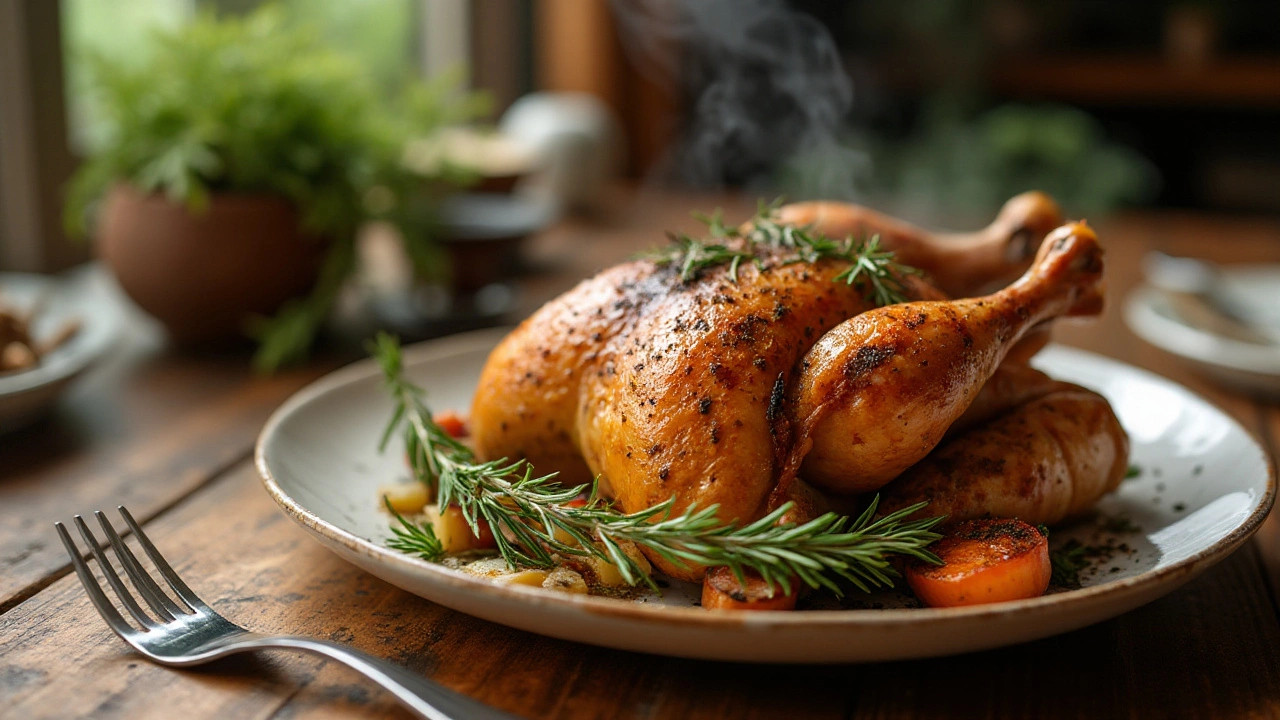
The Magic of Marination
Marination is nothing short of miraculous when it comes to unlocking the tender chicken texture we're seeking. This process, which involves soaking the meat in a seasoned liquid, does more than just add flavor. At its core, marination is about chemistry and timing. The elements within a marinade, like acids and enzymes, start to break down the proteins in the chicken, leading to a softer, more tender cut. From the tangy kiss of lemon juice to the smooth subtlety of yogurt, acids are a marinade's secret weapon. They work their magic by unraveling protein chains, which in turn loosens the meat structure and creates a more tender, juicy bite when cooked. But there’s balance needed here; too much acid or marination time can lead to mushiness.
A good marinade often contains a trifecta of ingredients: an acid (like vinegar or citrus), an oil (such as olive or sesame), and a flavoring component (herbs, spices, and aromatics). Oils play a crucial role as they adhere to the meat surface, creating a barrier that helps lock in moisture during cooking. This barrier prevents the chicken from drying out, leading to that coveted tender texture. Flavoring ingredients are just as important, and this is where the art of marination truly shines. The right mix of garlic, ginger, cumin, or rosemary can turn a simple chicken breast into a culinary masterpiece. Experienced chefs often use herbs and spices not just for taste but to marry flavors throughout the chicken uniformly.
The Science Behind It
Marination isn’t an exact science; it's an exploration of how different ingredients affect meat texture. There's an ideal time for marinating too. According to culinary experts, chicken pieces only need a couple of hours to see an effect, while tougher proteins might require overnight marinating. One study published in the Journal of Food Science highlights the significant impact of different acids from citrus fruits on meat tenderness, showing marked improvement after just two hours. And to further complicate matters, different cuts of chicken react uniquely to marination. Delicate cuts like the breast require shorter times, while tougher sections such as thighs can handle longer durations due to their inherently stronger tissue structure.
"The first step in creating succulent poultry lies in the marinade—season with purpose and let the bird do the rest," quotes seasoned chef Ricardo Ruiz, highlighting the focus on thoughtful ingredient selection.
Marination Tips
When marinating at home, there are a few tips that can elevate your cooking game. Always marinate in the refrigerator, as leaving chicken out at room temperature can lead to harmful bacterial growth. It's also wise to use a zip-top bag or a non-reactive bowl, like one made of glass or ceramic, to prevent the acid in the marinade from reacting with metal containers. Be sure to discard any leftover marinade that has come into contact with raw meat, as it can harbor bacteria. If you want to use the marinade as a sauce or baste, remember to boil it first to ensure food safety.
Finally, next time you approach that chicken dinner, harness the power of marination. Experiment with flavors, durations, and ingredients to see how even slight tweaks impact the results. This is the chef’s playground—a testament to how a simple soaking session can transform tender chicken from mundane to magnificent. A well-marinated piece of chicken can become the standout element of any meal, leaving friends and family marveling at the culinary artistry you brought to the table.
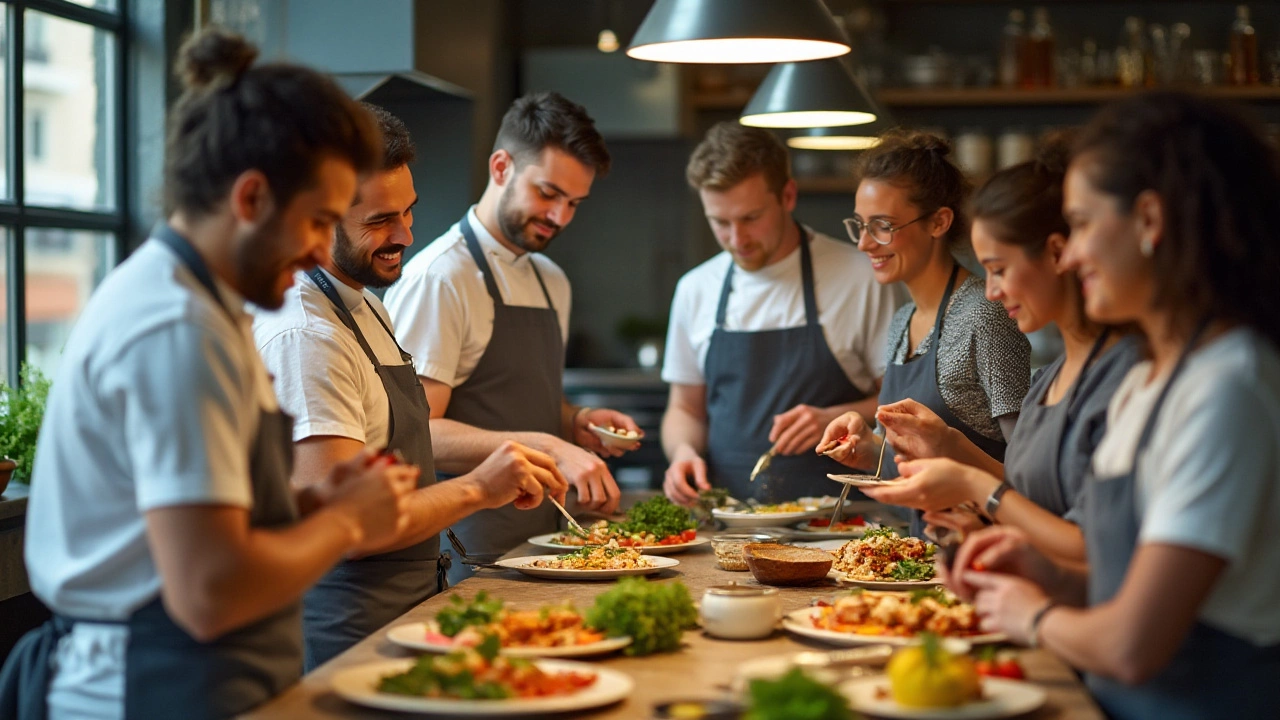
Cooking Techniques for Tenderness
Cooking a piece of chicken to tender perfection requires more than just burning it on a grill or frying it in a pan. The method you choose can heavily influence the texture and juiciness of the meat. One of the most effective ways to ensure tenderness is through sous-vide cooking. This technique involves sealing the chicken in an airtight bag and cooking it slowly in a temperature-controlled water bath. The process allows for precise control of temperature, which ensures that the chicken is evenly cooked and remains juicy. Sous-vide might sound high-tech, but it's becoming increasingly accessible with user-friendly equipment available for home cooks.
Another well-appreciated technique in the culinary world is brining. Soaking the chicken in a solution of water, salt, and sometimes sugar, it helps improve the texture and flavor before cooking. The salt penetrates the meat, breaking down muscle fibers and increasing moisture retention. When done correctly, brined chicken is not only tender but also flavorful. Some chefs also opt for dry brines, which involve generously coating the chicken in a salt-based rub and letting it sit for several hours or overnight.
Whether roasting, grilling, or pan-searing, the use of the right techniques plays a huge role in chicken preparation. The Maillard reaction – a scientific term referring to the browning of proteins and sugars under heat – is crucial in developing rich flavors. When searing chicken, achieving that golden-brown crust not only adds flavor but locks in juices that are essential for tenderness. Balancing cooking time and heat is key. Too high a temperature can cause chicken to become dry and tough, while a low, slow cook allows it to remain moist.
"Timing is everything when it comes to cooking chicken just right," says Julia Child. "Too little and the insides may haven't cooked to safety; too much, and you're chewing on a piece of dry leather."
Lastly, resting is often an overlooked step but vital for moist, tender chicken. After cooking the meat, allowing it to sit for a few minutes helps redistribute its juices throughout the flesh. Slicing too soon causes those precious juices to escape onto the plate rather than enhancing the meat's texture. The next time you're cooking chicken, try integrating these techniques to transform your results from ordinary to extraordinary. Get ready to impress with succulent, tender chicken that's anything but pedestrian.

Expert Tips for Home Cooks
For the home cook who dreams of crafting a five-star meal in their own kitchen, the journey towards preparing perfectly tender chicken need not be a mystery. One of the first tricks to adopt from seasoned chefs is the power of patience. When it comes to marinating, allowing your chicken ample time to absorb the flavors and tenderizing agents can dramatically impact the final result. Consider using buttermilk or yogurt; these dairy products contain enzymes and acids that work on the protein strands in the chicken. A soaking time of a few hours—better overnight—can make all the difference in transforming the texture.
It is important, too, to master the art of searing. Remember, searing locks in the juices, creating that coveted crispy exterior while keeping the meat inside deliciously moist. A hot, lightly oiled pan and a few minutes of high heat can work wonders. A useful tip from culinary experts is to avoid overcrowding the pan, as this prevents proper browning. Leave some space between the pieces for even cooking. Adding a splash of chicken stock or broth towards the end can also infuse additional flavor, ensuring each bite is juicy.
"Slow down and savor the cooking process," suggests renowned chef Thomas Keller, "it's as much about patience and attention to detail as it is about ingredients."
Cooking tips do not stop at the stovetop; the way you handle chicken after cooking matters significantly. Letting it rest for about 5-10 minutes before slicing allows the juices to redistribute themselves throughout the meat. Cutting too soon releases these juices, often leaving your chicken drier than intended. It's a simple step often overlooked but vital for achieving the desired tenderness. Additionally, pay attention to the way you slice—cutting against the grain of the meat can enhance tenderness. Serve your creation with freshly ground pepper and a dash of herbs for a burst of flavor that compliments the dish's primary tenderness.
Arming yourself with these expert tips will undoubtedly make a difference in your culinary exploits. Each step, from marination to final plating, adds layers of flavor and tenderness that can elevate your dish. Compared to the pros, you may feel hesitant at first but with practice comes improvement. Unlock the secrets of chefs by focusing on each phase and let your kitchen be your canvas as you make progress. Who knows, somewhere along the way, a simple chicken recipe could turn into your signature dish.
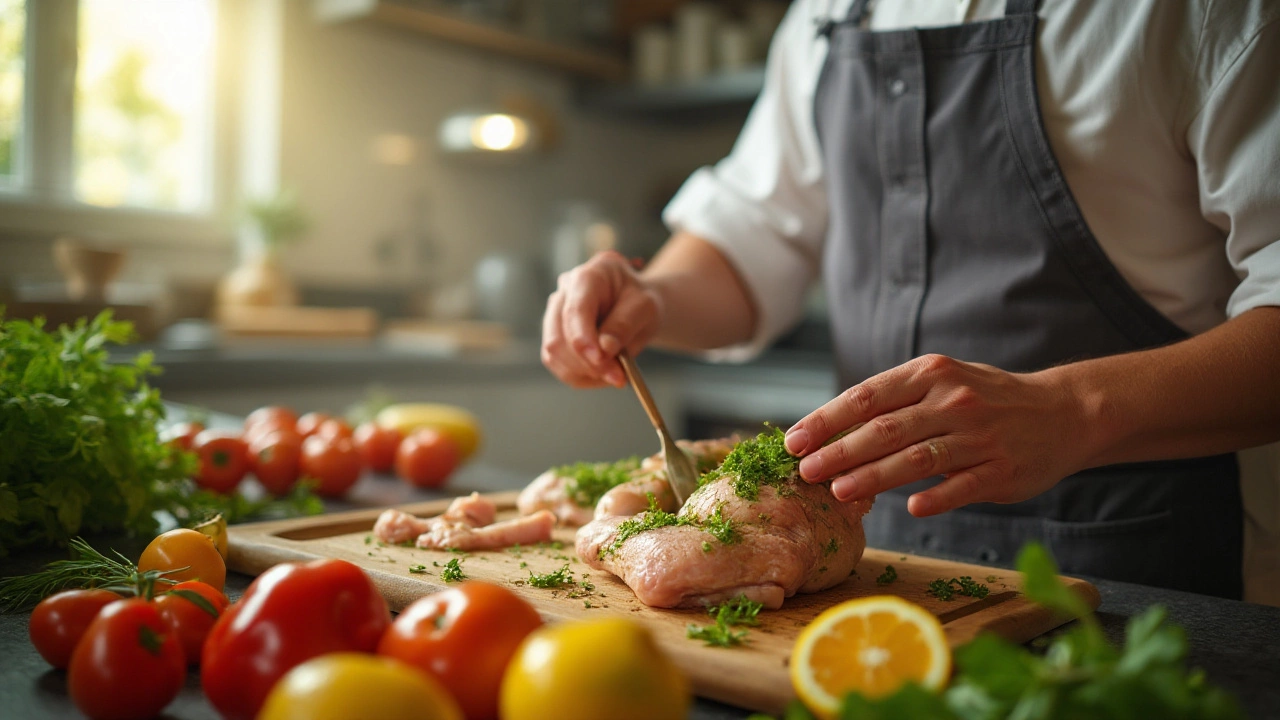


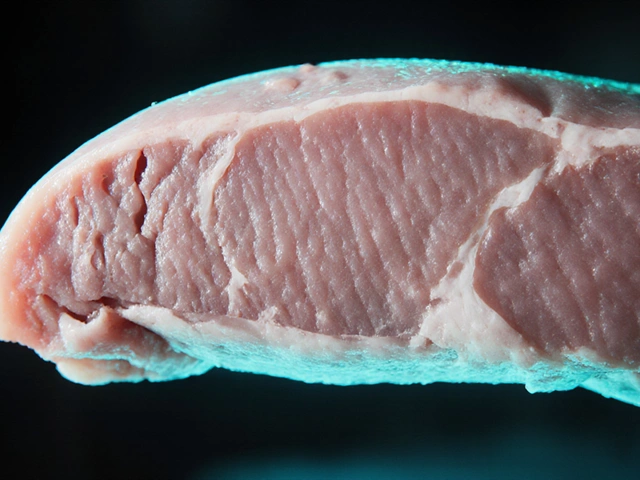
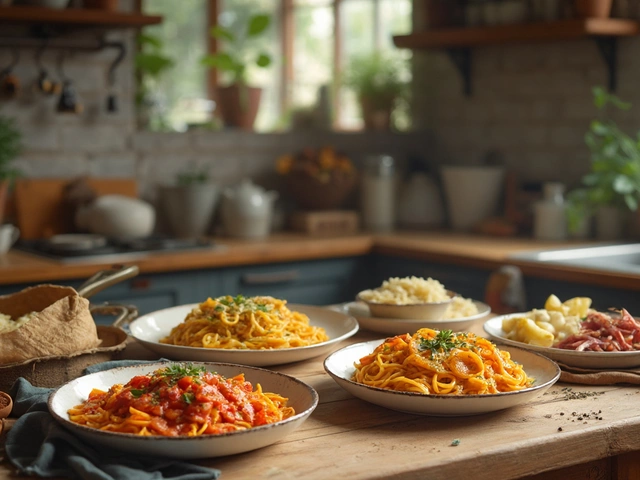
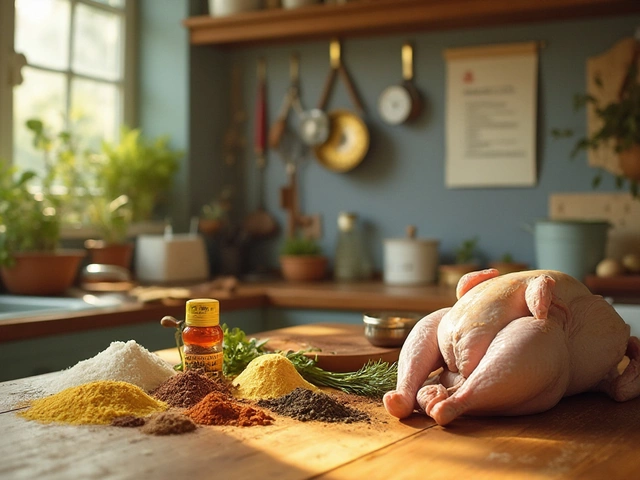
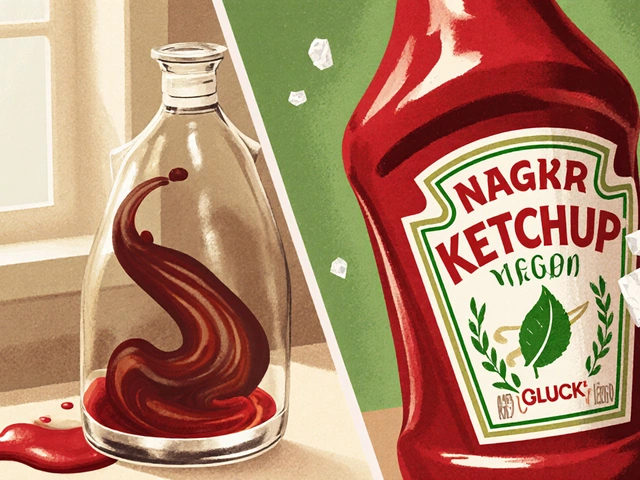

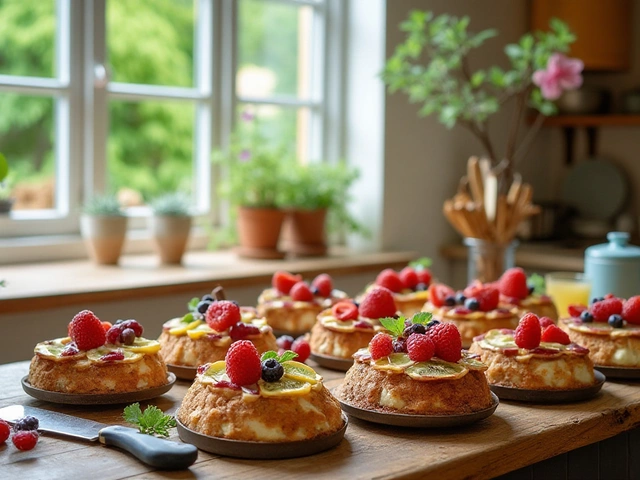
Write a comment